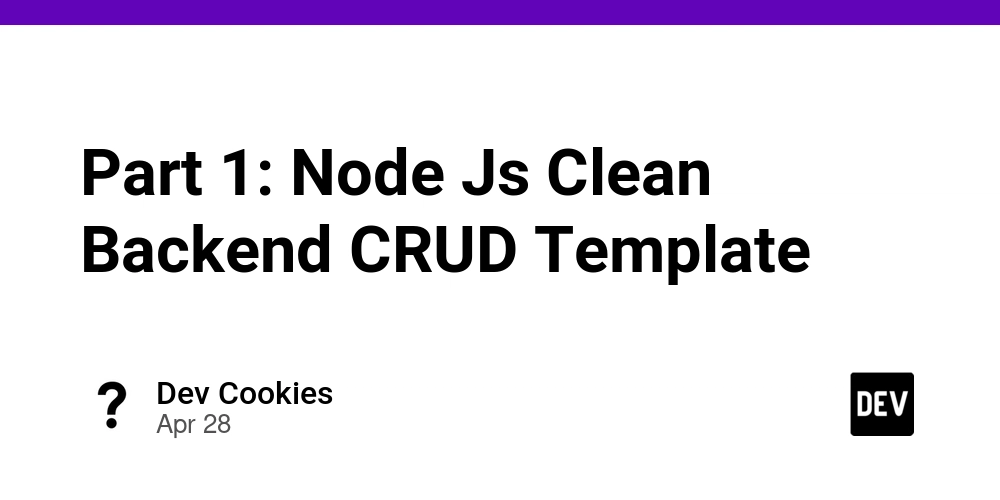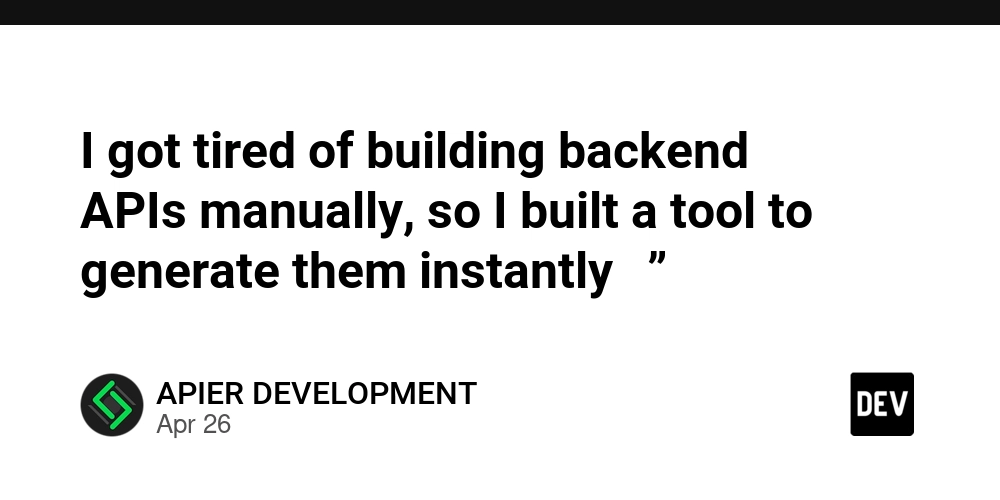The Evolution of Fashion Through Blockchain: Navigating the Funding Landscape
Abstract: This post explores how blockchain technology is revolutionizing the fashion industry by addressing issues like counterfeiting, transparency, and sustainability. We detail the evolution of blockchain in fashion, examine the role of funding methods such as venture capital, angel investment, crowdfunding, and government grants, and evaluate challenges including regulatory compliance and technological hurdles. We also discuss practical applications, innovative trends, and future outlooks in this rapidly evolving space. This comprehensive guide brings together insights from the original article on Funding for Blockchain in Fashion along with additional context from the broader blockchain ecosystem. Introduction The merging of fashion and technology is dramatically reshaping how we view and value clothing and accessories. In recent years, blockchain technology has emerged as a key disruptor, promising to tackle age-old issues such as counterfeiting, complex supply chains, and unsustainable production practices. By creating verifiable digital records, blockchain instills transparency and trust in each transaction. The wide acceptance of blockchain innovations in fashion is in part driven by strategic funding choices that empower startups and established brands alike. In this post, we dive deep into the evolution of blockchain in the fashion world. We blend insights from the original article with broader industry knowledge from sources like What is Blockchain and discussions on angel investments from Angel Investors in Blockchain. Additionally, we reference projects such as Provenance and VeChain that have showcased tangible success, alongside alternative funding platforms like Kickstarter and Indiegogo. Finally, insights from Dev.to posts on blockchain funding and technology, such as Unlocking the Future: The Dynamics of Blockchain Project ICOs, provide additional depth to our exploration. Background and Context Blockchain Defined and Its History in Fashion Blockchain is a decentralized digital ledger that securely records transactions, ensuring data immutability and transparency. Initially developed as the backbone for cryptocurrencies like Bitcoin, blockchain's potential quickly spread to other sectors. The fashion industry, plagued by issues like counterfeit products and opaque supply chains, appears as an ideal field for blockchain intervention. Historically, fashion has struggled with: Authenticity and counterfeiting: Millions of dollars are lost annually to counterfeit goods. Supply chain inefficiencies: Complex and often opaque supply chains make it hard to track sustainability claims. Sustainability and ethical practices: Consumers increasingly demand transparency in material sourcing and production practices. Blockchain offers a solution by using cryptographic signatures and smart contracts to record every step in the manufacturing and distribution process reliably. The Ecosystem of Funding in Fashion Blockchain For blockchain technology to fully transform fashion, adequate funding is critical. Different models have emerged, including: Venture Capital and Angel Investors: These provide early-stage capital and strategic guidance. Crowdfunding and ICOs: Platforms like Kickstarter and Indiegogo democratize funding, while Initial Coin Offerings empower blockchain startups by tokenizing their value. Government Grants and Collaborative Partnerships: Recognizing blockchain’s potential, many governments and industry consortia are supporting blockchain projects with grants and incentives. Below is a table summarizing various funding avenues: Funding Method Description Pros Cons Venture Capital & Angel Investments by high-net-worth individuals and firms to fuel early-stage innovations Strategic guidance, large sums available High expectations, equity dilution Crowdfunding & ICOs Community-driven fundraising through platforms and token sales Democratizes investment, community engagement Regulatory scrutiny, market volatility Government Grants Financial support from public institutions and collaborative R&D partnerships Less equity pressure, supportive ecosystem Bureaucratic hurdles, slow disbursement Core Concepts and Features Authentication and Counterfeiting Prevention Blockchain provides each product with a unique digital identity that is recorded in a tamper-proof ledger. Through this mechanism: Consumers verify authenticity: Buyers can check a product's full history, ensuring that luxury items or designer labels are genuine. Brands build trust: Transparent record-keeping enhances brand reputation and customer loyalty. Enhancing Supply Chain Transparency With intricate supply chains, fashion brands often struggle to demonstrate ethical production practices. Blockchain features that address this include: Traceability: Every stage from raw material sourcing to final retai

Abstract:
This post explores how blockchain technology is revolutionizing the fashion industry by addressing issues like counterfeiting, transparency, and sustainability. We detail the evolution of blockchain in fashion, examine the role of funding methods such as venture capital, angel investment, crowdfunding, and government grants, and evaluate challenges including regulatory compliance and technological hurdles. We also discuss practical applications, innovative trends, and future outlooks in this rapidly evolving space. This comprehensive guide brings together insights from the original article on Funding for Blockchain in Fashion along with additional context from the broader blockchain ecosystem.
Introduction
The merging of fashion and technology is dramatically reshaping how we view and value clothing and accessories. In recent years, blockchain technology has emerged as a key disruptor, promising to tackle age-old issues such as counterfeiting, complex supply chains, and unsustainable production practices. By creating verifiable digital records, blockchain instills transparency and trust in each transaction. The wide acceptance of blockchain innovations in fashion is in part driven by strategic funding choices that empower startups and established brands alike.
In this post, we dive deep into the evolution of blockchain in the fashion world. We blend insights from the original article with broader industry knowledge from sources like What is Blockchain and discussions on angel investments from Angel Investors in Blockchain. Additionally, we reference projects such as Provenance and VeChain that have showcased tangible success, alongside alternative funding platforms like Kickstarter and Indiegogo. Finally, insights from Dev.to posts on blockchain funding and technology, such as Unlocking the Future: The Dynamics of Blockchain Project ICOs, provide additional depth to our exploration.
Background and Context
Blockchain Defined and Its History in Fashion
Blockchain is a decentralized digital ledger that securely records transactions, ensuring data immutability and transparency. Initially developed as the backbone for cryptocurrencies like Bitcoin, blockchain's potential quickly spread to other sectors. The fashion industry, plagued by issues like counterfeit products and opaque supply chains, appears as an ideal field for blockchain intervention.
Historically, fashion has struggled with:
- Authenticity and counterfeiting: Millions of dollars are lost annually to counterfeit goods.
- Supply chain inefficiencies: Complex and often opaque supply chains make it hard to track sustainability claims.
- Sustainability and ethical practices: Consumers increasingly demand transparency in material sourcing and production practices.
Blockchain offers a solution by using cryptographic signatures and smart contracts to record every step in the manufacturing and distribution process reliably.
The Ecosystem of Funding in Fashion Blockchain
For blockchain technology to fully transform fashion, adequate funding is critical. Different models have emerged, including:
- Venture Capital and Angel Investors: These provide early-stage capital and strategic guidance.
- Crowdfunding and ICOs: Platforms like Kickstarter and Indiegogo democratize funding, while Initial Coin Offerings empower blockchain startups by tokenizing their value.
- Government Grants and Collaborative Partnerships: Recognizing blockchain’s potential, many governments and industry consortia are supporting blockchain projects with grants and incentives.
Below is a table summarizing various funding avenues:
| Funding Method | Description | Pros | Cons |
|---|---|---|---|
| Venture Capital & Angel | Investments by high-net-worth individuals and firms to fuel early-stage innovations | Strategic guidance, large sums available | High expectations, equity dilution |
| Crowdfunding & ICOs | Community-driven fundraising through platforms and token sales | Democratizes investment, community engagement | Regulatory scrutiny, market volatility |
| Government Grants | Financial support from public institutions and collaborative R&D partnerships | Less equity pressure, supportive ecosystem | Bureaucratic hurdles, slow disbursement |
Core Concepts and Features
Authentication and Counterfeiting Prevention
Blockchain provides each product with a unique digital identity that is recorded in a tamper-proof ledger. Through this mechanism:
- Consumers verify authenticity: Buyers can check a product's full history, ensuring that luxury items or designer labels are genuine.
- Brands build trust: Transparent record-keeping enhances brand reputation and customer loyalty.
Enhancing Supply Chain Transparency
With intricate supply chains, fashion brands often struggle to demonstrate ethical production practices. Blockchain features that address this include:
- Traceability: Every stage from raw material sourcing to final retail is recorded.
- Real-time data: Stakeholders gain immediate insights into product journeys.
- Smart contracts: Automate verification processes and reduce human error.
Sustainability and Ethical Production
Consumers and regulators now insist that fashion be sustainable and ethically produced. Blockchain addresses these concerns by:
- Tracking eco-friendly materials and sustainable sourcing processes.
- Verifying compliance with ethical labor practices.
- Encouraging collaborations and impact investment initiatives that focus on environmental and social outcomes.
Bullet list of key features:
- Immutable Digital Records
- Enhanced Traceability
- Decentralized Verification Mechanisms
- Automated Compliance via Smart Contracts
Funding Innovations Supporting Blockchain Adoption
Funding innovations have helped bridge the gap between cutting-edge technology and widespread adoption. Consider:
- Venture Capital Investment: Strategic capital from firms focused on high-return innovations.
- Crowdfunding: Platforms that allow early adopters to invest and participate in the growth of blockchain startups.
- Impact Investment Models: Focused on generating social and environmental benefits alongside financial returns.
This section highlights how the confluence of technology and finance is a driving force behind blockchain's evolution in fashion.
Applications and Use Cases
Case Study 1: Counterfeit Reduction in Luxury Fashion
Luxury brands are among the earliest adopters of blockchain to safeguard their products. For example:
- VeChain's anti-counterfeiting solutions have enabled brands to offer digital certificates of authenticity.
- Customers can easily verify their luxury items on a blockchain explorer linked to the product’s digital twin.
This use case has demonstrated substantial savings by reducing counterfeit revenue losses and enhancing brand trust.
Case Study 2: Transparent Supply Chain Management
Blockchain provides end-to-end visibility into the supply chain:
- Provenance, a blockchain startup, leverages decentralized ledgers to track product journeys, ensuring that ethical and sustainable practices are maintained.
- This real-time tracking allows consumers to verify the origin of materials and the ecological footprint of the product.
Additional Use Cases
Beyond counterfeiting and supply chain transparency, blockchain finds utility in:
- Digital Fashion and NFTs: Designers are tokenizing digital garments as NFTs, merging fashion with digital art.
- Crowdsourced Funding for Sustainable Practices: Startups leverage platforms like Kickstarter for community-backed funding while ensuring transparent accountability through blockchain records.
For further reading on blockchain applications, you may like this Dev.to post on blockchain project ICOs and insights into blockchain's role in open source software.
Challenges and Limitations
Though promising, merging blockchain and fashion does come with challenges:
Regulatory and Compliance Issues
- Data Privacy and Financial Regulations: Blockchain projects in fashion must align with global regulations, which requires considerable legal overhead.
- Consumer Protection: Ensuring that digital identities and transactions do not compromise consumer privacy is paramount.
Technological Hurdles
- Scalability: Many blockchain networks still face issues with speed and transaction throughput, which can hinder real-time supply chain transparency.
- Integration with Legacy Systems: Fashion companies with entrenched supply chain systems often struggle with the technical integration of blockchain solutions.
Market Adoption and Education
- Consumer Awareness: Convincing consumers of blockchain’s benefits requires significant outreach and education.
- Stakeholder Resistance: Traditional industry players might resist adopting completely new systems, especially when investment in legacy infrastructure is heavy.
Bullet list of technical challenges:
- Scalability and Throughput
- Integration with Existing Systems
- Regulatory Complexity
- Consumer and Industry Education Needs
Future Outlook and Innovations
Emerging Trends
The intersection of fashion and blockchain is evolving rapidly. Future trends include:
- Integration with IoT: As detailed in the Blockchain and IoT initiative, combining IoT devices with blockchain can provide granular data about product condition and lifecycle.
- Artificial Intelligence and Blockchain: Merging AI with blockchain could lead to advanced analytics on fashion trends, forecasting supply chain disruptions, and enhancing customer personalization.
- Decentralized Finance (DeFi) in Fashion: Impact investments and innovative funding models, such as yield farming, are being explored to finance blockchain projects in fashion. This trend is picking up attention from investors focused on both financial returns and social impact.
Innovative Funding Models
With the evolution of crypto-economic models, funding innovations such as Initial Coin Offerings (ICOs) and Non-Fungible Tokens (NFTs) are fueling blockchain adoption:
- Crowdsourced Funding Efforts: Utilizing platforms similar to Indiegogo for blockchain fashion projects democratizes access to funding.
- Impact and Social Investment: Increased focus on projects that promise environmental and social outcomes is likely to drive further investment into sustainable fashion innovations.
Cross-Technology Synergy
There is a growing synergy across various technological domains. For instance:
- Blockchain and DeFi Integration: New protocols that merge decentralized finance with blockchain supply chains promise smoother transaction settlement and lower fees.
- Enhanced Data Analytics: The combination of blockchain, IoT, and AI is leading to groundbreaking tools that not only track product journeys but also provide actionable insights to optimize operations.
- Interoperability Solutions: Projects like those discussed in Arbitrum’s Scalability Challenges suggest that bridging different blockchain networks will be crucial to achieving global supply chain transparency.
For additional industry insight on blockchain’s future, consider this Dev.to post on the intersection of blockchain and digital assets that explores emerging technical trends.
Summary
In summary, blockchain technology is paving the way for a more transparent, sustainable, and secure fashion industry. By addressing key issues such as counterfeiting and complex supply chains through immutable digital records and smart contracts, blockchain is set to transform the sector. However, this transformation is heavily dependent on robust funding from venture capital, angel investors, and innovative models like crowdsourcing and ICOs. Despite challenges such as regulatory compliance and scalability hurdles, the future of blockchain in fashion looks promising, with new synergies emerging between blockchain, IoT, and AI.
Key takeaways of this post:
- Blockchain empowers fashion by providing immutable records that ensure authenticity and transparency.
- Funding is a critical catalyst, with various models including VC, crowdfunding, and government grants playing key roles.
- Real-world use cases, such as those provided by VeChain and Provenance, demonstrate how blockchain can reduce counterfeiting and streamline supply chain management.
- Challenges remain, particularly in scalability and integration, but innovation through IoT and AI offers a promising future.
For further reading and knowledge expansion, check out these additional resources:
Moreover, perspectives from the developer community such as Unlocking the Future: The Dynamics of Blockchain Project ICOs and Blockchain’s Revolutionary Role in Open Source Software shed light on funding and technological nuances that underline this new era.
Concluding Thoughts
The convergence of fashion and technology through blockchain is more than just a trend; it is the cornerstone of a digital transformation that will redefine industries. From luxury brands fighting counterfeiting to transparent, ethical supply chains that foster consumer trust, blockchain is setting high standards that were once thought impossible.
As the funding landscape evolves to support these innovations—through venture capital, ICOs, crowdfunding, and government partnerships—fashion companies and technology startups alike must embrace these collaborative models. While challenges in regulatory compliance, scalability, and consumer adoption persist, the horizon is bright with innovations such as IoT integration and AI-powered analytics.
With robust funding and a commitment to ethical, sustainable practices, blockchain can drive the future of the fashion industry toward greater transparency and accountability. The journey is just beginning, and creative partnerships across the globe continue to unlock new opportunities that bridge traditional fashion with cutting-edge technology.
In closing, the evolution of fashion through blockchain is a testament to the transformative overlap of financial innovation, technological advancement, and creative design. For those interested in exploring further, keep abreast of developments and join the conversation through both technical blogs and community-driven platforms—together, we’re defining the new standard for a digital, sustainable future in fashion.
Happy innovating and stay tuned for more insights into blockchain’s impact on the fashion industry!





































































































































































![[The AI Show Episode 145]: OpenAI Releases o3 and o4-mini, AI Is Causing “Quiet Layoffs,” Executive Order on Youth AI Education & GPT-4o’s Controversial Update](https://www.marketingaiinstitute.com/hubfs/ep%20145%20cover.png)





























































































































![[FREE EBOOKS] Learn Computer Forensics — 2nd edition, AI and Business Rule Engines for Excel Power Users & Four More Best Selling Titles](https://www.javacodegeeks.com/wp-content/uploads/2012/12/jcg-logo.jpg)





![From Art School Drop-out to Microsoft Engineer with Shashi Lo [Podcast #170]](https://cdn.hashnode.com/res/hashnode/image/upload/v1746203291209/439bf16b-c820-4fe8-b69e-94d80533b2df.png?#)






































































































(1).jpg?#)
































_Inge_Johnsson-Alamy.jpg?width=1280&auto=webp&quality=80&disable=upscale#)









































































































![Apple to Split iPhone Launches Across Fall and Spring in Major Shakeup [Report]](https://www.iclarified.com/images/news/97211/97211/97211-640.jpg)
![Apple to Move Camera to Top Left, Hide Face ID Under Display in iPhone 18 Pro Redesign [Report]](https://www.iclarified.com/images/news/97212/97212/97212-640.jpg)
![Apple Developing Battery Case for iPhone 17 Air Amid Battery Life Concerns [Report]](https://www.iclarified.com/images/news/97208/97208/97208-640.jpg)
![AirPods 4 On Sale for $99 [Lowest Price Ever]](https://www.iclarified.com/images/news/97206/97206/97206-640.jpg)




































































































